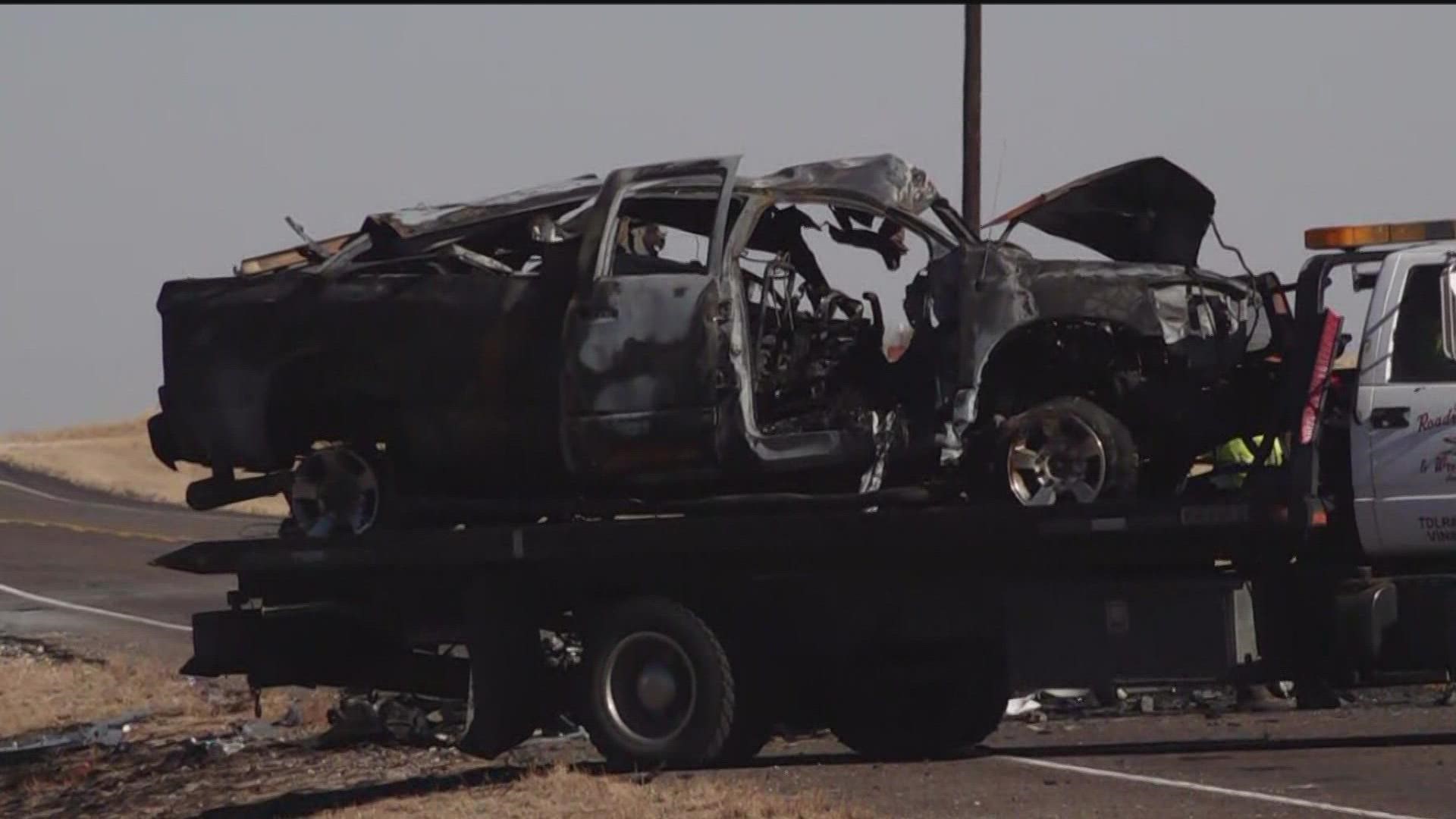ANDREWS COUNTY, Texas — The National Transportation Safety Board preliminary report has determined that the 13-year-old boy was not behind the wheel during the fatal crash involving golfers from the University of the Southwest.
After reviewing the DNA testing results provided by the Texas Department of Public Safety, the NTSB report states that the 38-year-old father was actually the one behind the wheel on March 15.
"Evidence collected to date in our investigation indicates the driver of the pickup in this crash was a 38-year-old man and not the 13-year-old male as originally reported at the time of the crash," Robert Molloy, NTSB's director of the Office of Highway Safety said.
NTSB's post-crash toxicological testing also revealed that the father behind the wheel had the presence of methamphetamine in his blood.
On March 17, NTSB initially stated that the driver of the pickup truck that caused the crash was the 13-year-old boy based on information provided at that time.
Additionally, the NTSB said it has not found any evidence of sudden or rapid loss of tire air pressure or any other indicators of catastrophic failure of the truck's front left tire at this time.
The crash resulted in the death of both the 13-year-old boy and 38-year-old father as well as seven members of the University of the Southwest golf team (one coach and six players). Two other golfers were seriously injured.
NTSB held a virtual media press conference with Molloy on Thursday.
Molloy stated that the 13 year old was initially reported as the driver because the damage to the vehicle and the post-crash fire made it difficult for NTSB to get the full picture.
When asked if the department had issued an apology to the families for the original info saying it was the teen, Molloy said they were made aware of the report being released Thursday and had access to a family assistance team member.
Molloy said since the toxicology report just came back, they do not know how much meth was in the father's system. While meth can impact a driver's performance, it's too early to say if it was a factor in this crash.
Several teams are working to determine what happened, including a technical reconstructionist trying to determine the speed of both vehicles and a survival factor specialist working to find out if those in the crash were wearing seatbelts or if any were thrown from the vehicles.
Upon initial investigation, Molloy said the left front tire had sustained the most damage. Because of that, the direction of the vehicles and the catastrophic nature of the crash, it was initially believed the tire was the cause.
However, the wheel was sent to a lab to be evaluated and no evidence of any sort of catastrophic failure was found.
"We then had the wheel sent to our NTSB research and engineering lab and our materials lab," Molloy said. "That office did a comprehensive evaluation of that wheel, and based on their evaluation of the wheel, they found no evidence of catastrophic failure."
Molloy said the investigation phase for the crash is starting to wind down. A determination of probable cause for the crash will be released at a later date when the final report is completed.
The crash is still under investigation and information is subject to change as the NTSB continues its investigation.

